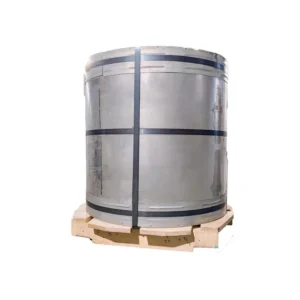Image Metadata
- Alt Text: Cold rolled electrical steel coils ready for global export
- Title: High-Quality Cold Rolled Electrical Steel Coils
- Caption: Cold rolled electrical steel produced with advanced technology for energy-efficient applications
- Description: Cold rolled electrical steel coils stored in a clean warehouse before shipment to global clients
2000-Word Blog Post
Understanding Cold Rolled Electrical Steel: Applications, Benefits, and Market Insights
Cold rolled electrical steel plays a pivotal role in modern power generation and transmission systems. As global industries continue to pursue energy efficiency, reduce losses, and adopt renewable technologies, the demand for high-quality electrical steel—particularly the cold rolled variety—has surged.
This blog explores what cold rolled electrical steel is, how it’s produced, its vital role in electrical engineering, and why it is a material of strategic importance for energy transition and industrial innovation.
What Is Cold Rolled Electrical Steel?
Cold rolled electrical steel is a special type of silicon steel that has been processed through cold rolling to achieve thinner gauge, improved flatness, and enhanced surface quality. This processing method not only tightens the steel’s dimensional tolerances but also improves its magnetic properties, making it highly suitable for electrical applications.
There are two main classifications of cold rolled electrical steel:
- Grain-Oriented Electrical Steel (GOES): Designed with a preferred crystal orientation to reduce core loss and increase magnetic efficiency. It’s primarily used in transformers and high-voltage power systems.
- Non-Grain-Oriented Electrical Steel (NGOES): Exhibits uniform magnetic properties in all directions and is used in motors, generators, and rotating machines.
Both types are vital to the efficient operation of electrical equipment, contributing to reduced energy loss and lower operational costs over time.
Manufacturing Process of Cold Rolled Electrical Steel
The production of cold rolled electrical steel involves several key steps:
- Hot Rolling: Starting with a slab of steel, the material is hot rolled to the desired intermediate thickness.
- Cold Rolling: The steel is then passed through cold rolling mills to achieve the final thickness with higher accuracy.
- Annealing: A controlled heat treatment that refines the grain structure, which is crucial for magnetic performance.
- Coating: The surface is often coated with an insulating layer to improve electrical resistance and corrosion protection.
Advanced equipment and precise process control are essential at each stage to ensure consistent quality and performance of the final product.
Applications Across Key Industries
Cold rolled electrical steel is indispensable in several sectors:
- Power Transformers: GOES is used in distribution and power transformers for high efficiency and minimal core loss.
- Electric Motors: NGOES is ideal for motors in HVAC systems, industrial machines, and consumer electronics.
- Automotive Industry: With the rise of electric vehicles (EVs), cold rolled electrical steel is used in traction motors for its energy-saving properties.
- Renewable Energy: Wind and solar power systems use this steel in their inverters and generators, ensuring stable and efficient electricity output.
Why Cold Rolled Electrical Steel Matters
The global focus on sustainability has placed cold rolled electrical steel at the center of clean energy technologies. The material’s ability to reduce energy loss in electrical systems directly impacts carbon emissions and grid performance.
Benefits of using cold rolled electrical steel include:
- Energy Efficiency: Lower core loss translates to reduced energy waste.
- Precision Performance: Better magnetic properties improve the performance of electrical devices.
- Durability: Coated cold rolled steel is resistant to environmental factors, increasing the service life of components.
- Global Compatibility: Meets international standards such as IEC, ASTM, and JIS, ensuring smooth export and integration.
Cold Rolled Electrical Steel in the Global Market
According to recent industry reports, the global market for cold rolled electrical steel is expected to grow significantly through 2030. This growth is driven by:
- Expanding infrastructure in developing countries.
- Upgrades to aging power grids in Europe and the Middle East.
- Rapid electrification of transportation and manufacturing.
- Continued investment in renewable energy.
China, South Korea, Japan, and some European nations are leading producers of cold rolled electrical steel, with increasing exports to markets in the Middle East, Africa, and North America.
Focus on Europe and the Middle East
Europe’s ambitious Green Deal and decarbonization goals are driving demand for electrical steel that supports smart grids and electric mobility. Meanwhile, the Middle East is investing heavily in renewable energy, smart cities, and industrial diversification—making cold rolled electrical steel a strategic import.
Several governments in the Gulf region are initiating public-private partnerships to localize power equipment production. This creates an opening for high-quality steel suppliers from Asia and Europe to offer cold rolled electrical steel tailored to local regulations and applications.
Meeting International Standards
Suppliers exporting cold rolled electrical steel must meet various international quality benchmarks. Some of the most recognized include:
- IEC 60404 Series: Standards for magnetic materials, including core loss and permeability testing.
- ASTM A876/A876M: Specifies requirements for non-oriented electrical steel.
- EN 10106: The European standard for cold rolled non-alloy electrical steel sheet and strip.
Manufacturers investing in in-house testing, quality certification, and custom product grades are better positioned to compete globally.
Sustainable Production and Innovation
As climate regulations tighten, steel producers are adopting greener production methods. These include:
- Using hydrogen-based reduction techniques.
- Recycling steel scrap to reduce emissions.
- Applying eco-friendly insulation coatings.
- Reducing water and energy consumption in annealing processes.
Innovations such as ultra-thin cold rolled electrical steel (as low as 0.18 mm) and high-frequency grades are expanding the material’s usability in next-generation technologies, such as 5G infrastructure, electric aviation, and compact robotics.
Conclusion
Cold rolled electrical steel is more than just a raw material—it is a catalyst for the future of electrification. From powering high-efficiency transformers to enabling the quiet hum of EV motors, it remains essential to modern life and industrial progress.
As Europe and the Middle East continue their push toward sustainable development, cold rolled electrical steel will play a key role in supporting energy resilience, industrial growth, and technological advancement. For companies in this space, now is the time to invest in innovation, certifications, and global partnerships to meet rising demand and deliver high-performance materials that power the future.




